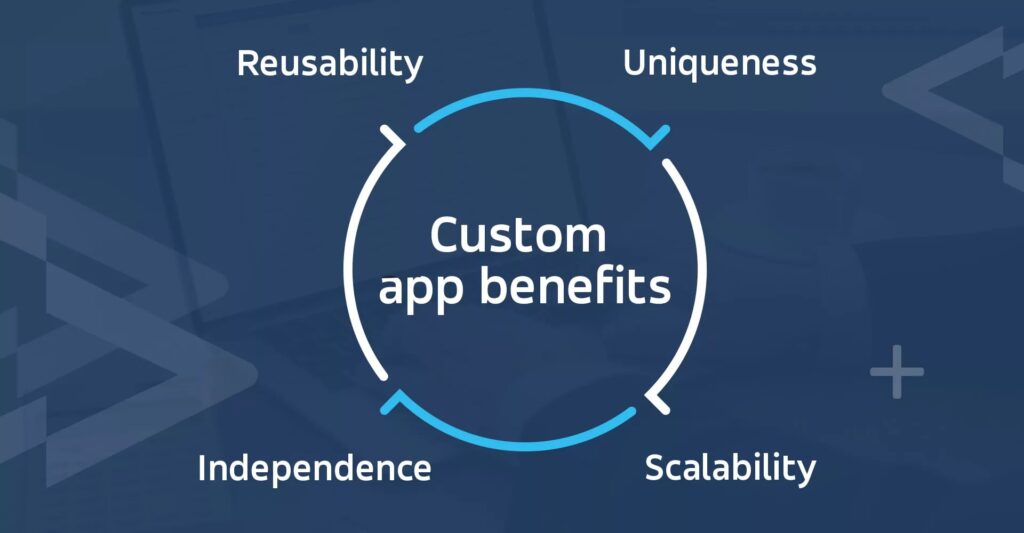In today’s fast-paced digital world, having a strong online presence is not just an option—it’s a necessity. But as businesses grow and evolve, their needs become more unique and complex. This is where customized web application development comes into play. While off-the-shelf software can offer quick solutions, it often lacks the flexibility and personalization businesses need to thrive. In this guide, we will delve deep into the world of customized web application development and why it’s the right choice for businesses looking to stay competitive.
What is Customized Web Application Development?
Customized web application development refers to the process of creating a tailor-made web solution specifically designed to meet the unique needs of a business. Unlike generic web apps, which are built for broad use, customized web applications are designed with a company’s specific goals, workflows, and audience in mind.
These applications are built from scratch, often starting with an in-depth analysis of the business’s needs, followed by the design, development, testing, and deployment stages. They are scalable, flexible, and built to adapt to the company’s growth and changing requirements.
Benefits of Customized Web Application Development

Custom web applications provide a range of advantages that make them an attractive option for businesses, especially those that require specific functionalities that off-the-shelf solutions cannot deliver. Here are some key benefits:
1. Tailored Solutions for Unique Needs
Every business is different, and so are its needs. A custom web application allows businesses to have a solution that is specifically tailored to their requirements. Whether it’s a unique workflow, special integrations with other tools, or specific user roles, a customized application ensures that the business operates smoothly and efficiently.
2. Scalability
As businesses grow, so do their operational needs. A custom-built web app can be designed to scale with the business. This means that as the user base grows, new features or functionalities can be easily added without disrupting the entire system. Off-the-shelf solutions, on the other hand, may struggle to accommodate such growth.
3. Enhanced Security
With cyberattacks on the rise, security is a major concern for any business. Customized web applications are built with security in mind, using the latest encryption techniques and security measures. Since the application is unique to the business, it is less likely to have common vulnerabilities found in more widely-used software, reducing the chances of a breach.
4. Competitive Advantage
In today’s competitive landscape, having a tool that sets your business apart is invaluable. A customized web application can provide that competitive edge by offering functionalities and user experiences that your competitors’ tools don’t. It allows businesses to streamline processes, improve customer engagement, and ultimately boost productivity and revenue.
5. Seamless Integration with Other Tools
Many businesses use a variety of software and platforms to handle different operations—CRM, ERP, accounting software, and more. A customized web application can be built to integrate seamlessly with these tools, ensuring smooth data flow and minimizing manual data entry, which reduces errors and saves time.
Customized Web Application Development Process
The process of building a customized web application is a collaborative effort between the business and the development team. Here’s an overview of the typical stages involved:
1. Requirement Gathering
This is the foundation of the entire project. The development team works closely with the business to understand their unique needs, goals, and challenges. This stage involves deep discussions about the current workflows, target audience, and specific features the web application should have.
2. Planning and Design
Once the requirements are clear, the planning phase begins. The developers create a roadmap for the project, including timelines, budgets, and technology stacks. This is also when the design team starts crafting the user interface (UI) and user experience (UX) elements. The design is centered around usability, ensuring the application is intuitive and easy to navigate.
3. Development
The actual coding begins in the development stage. Depending on the complexity of the project, the development process may follow methodologies like Agile, where the project is divided into smaller sprints. The team works on the back-end and front-end functionalities, ensuring that the application is both functional and aesthetically pleasing.
4. Testing
Before launching, the application undergoes rigorous testing. The team checks for bugs, security vulnerabilities, and any performance issues. User acceptance testing (UAT) is also carried out, allowing the business to test the application in a real-world environment to ensure it meets their expectations.
5. Deployment and Maintenance
Once testing is complete, the web application is deployed. But the work doesn’t end here. Ongoing maintenance is crucial to ensure the app runs smoothly, remains secure, and is updated as needed. As businesses evolve, updates and new features may be required, which can be added seamlessly to the application.
Key Features of Customized Web Applications
What sets custom web applications apart is their ability to incorporate features that align with a business’s specific needs. Some of the most common features include:
- User Management: Custom user roles and permissions to control access to specific areas of the application.
- Data Analytics: Built-in reporting and analytics tools to help businesses make data-driven decisions.
- Automation: Automating routine tasks, such as sending emails or generating invoices, to save time and reduce errors.
- Custom Dashboards: Personalized dashboards that show relevant data and KPIs for users, depending on their role.
- API Integrations: Seamless integration with third-party services like payment gateways, social media platforms, or other business tools.
Industries That Benefit from Customized Web Application Development
Customized web applications are versatile and can be tailored for any industry. Some industries that greatly benefit from these solutions include:
- Healthcare: Custom web apps can handle patient management, appointment scheduling, and medical records securely.
- E-Commerce: Businesses can manage their inventory, orders, and customer data more efficiently through tailored web applications.
- Finance: Banks and financial institutions can use custom apps for secure transactions, customer management, and compliance tracking.
- Education: Online learning platforms with personalized dashboards and content management can greatly enhance the learning experience.
Challenges of Customized Web Application Development
While customized web applications offer immense benefits, there are also challenges to consider:
1. Higher Initial Costs
Custom development typically requires a larger initial investment compared to purchasing off-the-shelf software. However, the long-term ROI often outweighs these upfront costs due to the tailored solution’s effectiveness and scalability.
2. Time-Consuming
Building a custom application from scratch can take time. Depending on the complexity, it may take weeks or even months before the application is fully functional. However, this investment in time ensures that the final product is precisely what the business needs.
3. Ongoing Maintenance
Once the application is live, it requires ongoing maintenance to ensure it remains functional and secure. This involves regular updates, security patches, and occasionally adding new features as the business evolves.
Conclusion
In an era where businesses need to be more agile and customer-focused than ever, customized web application development provides the perfect solution. By tailoring the web app to the unique needs of your business, you ensure scalability, security, and a competitive edge in the market. While it may require a larger upfront investment, the long-term benefits—ranging from seamless integrations to enhanced user experiences—make it a smart choice for businesses of all sizes.
Whether you’re in healthcare, finance, or retail, investing in a custom web application is a step toward greater efficiency, better customer engagement, and overall business success.
